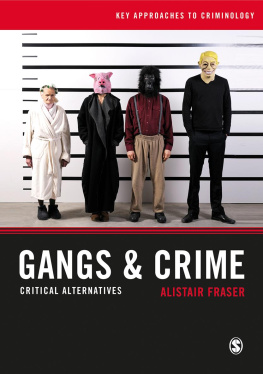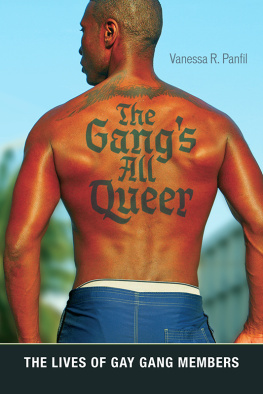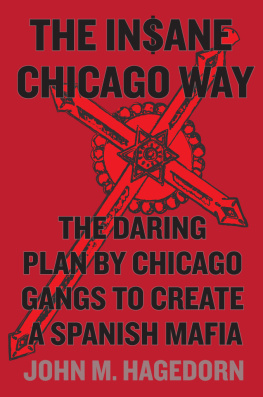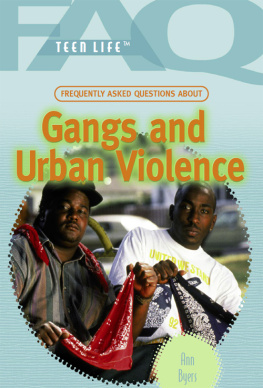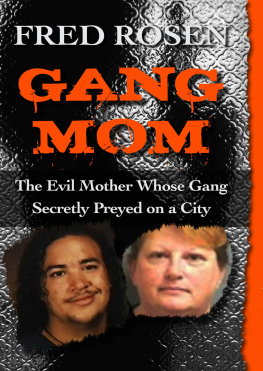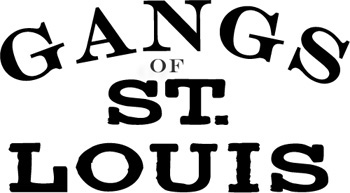

DANIEL WAUGH

Published by The History Press
Charleston, SC 29403
www.historypress.net
Copyright 2010 by Daniel Waugh
All rights reserved
First published 2010
Second printing 2011
Third printing 2011
e-book edition 2011
ISBN 978.1.61423.185.1
Library of Congress Cataloging-in-Publication Data
Waugh, Daniel, 1977-The gangs of St. Louis : men of respect / Daniel Waugh.
p. cm.
Includes bibliographical references.
print edition ISBN 978-1-59629-905-4
1. Gangs--Missouri--Saint Louis--History. 2. Gang members--Missouri--Saint Louis--History. 3. United States--History--1919-1933. I. Title.
HV6439.U7S727 2010
364.10660977866--dc22
2010001399
Notice: The information in this book is true and complete to the best of our knowledge. It is offered without guarantee on the part of the author or The History Press. The author and The History Press disclaim all liability in connection with the use of this book.
All rights reserved. No part of this book may be reproduced or transmitted in any form whatsoever without prior written permission from the publisher except in the case of brief quotations embodied in critical articles and reviews.
In Loving Memoriam
Yandal Swayze Waugh Jr.
(19462007)
CONTENTS
PREFACE
You made enough trouble for these other fellows to make them want to kill you, so you better get out and knock off as many of them as you can before they get you. Such words are spoken with the steely resolve of one who knows the end is near but is determined to take with him as many of his enemies as he can. Its the sort of thing you may expect to hear a beleaguered infantry sergeant tell his squad just before launching a no guts, no glory charge against a fortified position. It was actually uttered by Cuckoo Gang triggerman Tommy Hayes in the midst of a hellish gang war in the winter of 1932. Caught between two rival gangs who wanted to kill him and police who wanted to bust him, Hayes must have had few illusions about how things would turn out. It sure as hell wouldnt end like one of the Hollywood gangster movies that were then reaching the hilt of their popularity, with the bad-boy protagonist realizing that crime doesnt pay just before he kicks the bucket.
After countless books, films, documentaries and TV shows on the subject, Prohibition is seemingly looked upon like a mythical period. Enough years have passed that there are increasingly few people left who have firsthand memories of when the vocal minority attempted to legislate morality or of those men who forever defined the era with a hail of lead. Now a permanent part of American pop culture, the Prohibition mobster is usually presented in the same caricature: a wrinkle-faced mug who talks out of the side of his mouth a la Edward G. Robinson or Jimmy Cagney, wears a flower in his buttonhole, carries a Tommy gun in a violin case, spars with his incorruptible lawman nemesis and repents his life of crime or chickens out just before he gets blown away. As with any other celluloid genre, real life was a whole different story.
The Gangs of St. Louis: Men of Respect is the story of the Prohibition-era gangs of St. Louis, Missouri. Although larger than life in the Gateway City during their heyday, they remain mostly unknown today. Before rock n roll, before the Gateway Arch was built, before Stan Musial ever donned a Cardinal uniform, there was the Cuckoo Gang, the Green Ones, the Pillow Gang, the Russo Gang, the Hogan Gang and Egans Rats. One can say that the gangsters were merely providing a thirsty public with alcohol deprived it by a law that most had never supported anyway. One could also say that they were criminals and murderers who wrecked countless lives, including their own. It is not my intention in this narrative to pass judgment on anyone or anything; nor is it my intention to glorify these men or their deeds. If anyone who reads this feels hurt or offended, I offer my sincerest apologies.
The gangsters themselves came from all nationalities and walks of life. They were sons, brothers, uncles, fathers and husbands. They included amongst their ranks two brothers who were estranged from their third because they had joined the Mafia; a mob boss who had the quirky habit of using a pillow to cushion his rear end when he sat down; a group of sandlot baseball players that evolved into the most dangerous gang in the city; a weightlifting teetotaler who was suspected by police of killing twenty menthe list is endless. There is also their story itself, an enthralling saga of betrayals, blood feuds and gun battles. Some anecdotes include a heroic, if futile, last stand by a gangster cornered by his rivals and deserted by his partner; a beautiful shopkeeper who was wrenched away from her husband by a lustful mob boss; a law-abiding printer who devolved into a relentless killer in order to avenge his brothers murder at the hands of the Mafia; and a fearless and incorruptible St. Louis police captain who had the thankless task of putting the gangsters behind bars. These stories, and many others like them, show that the old days werent always good and that St. Louis wasnt any more innocent eighty years ago than it is right now. By remembering these men, their violent careers and their victims, we can learn about a past that few knew existed and, perhaps, glimpse what may lie ahead.
ACKNOWLEDGEMENTS
I would like to give thanks to God, for without Him, this book would not exist. Thank you to my son, David, my parents, grandparents, uncles, aunts, brothers, sisters, cousins and all of the other members of my family. I love you all. A blanket thank-you to all of my friendsyou know who you are!
Thank you, once again, to the staff at the St. Louis Public Library, especially the staff of the Microfilm Room for tolerating my near-continuous presence. Thanks also to the staff of the Missouri Historical Societys Archives. In no particular order, thanks to Bill Helmer, Rick Mattix, Chriss Lyon, Mario Gomes, Rose Keefe, John Winkeler, Brian Beerman, Mary Hunter Linneman, Maureen Klose and Rick Warner. Thank you all for your advice, encouragement and sharing of information. My work would be much less without your contributions. A special thank-you to Roland Klose for getting the ball rolling, so to speak. Thank you also to Ben Gibson and the staff at The History Press for bringing this work to fruition. Thank you to the men and women of the St. Louis Metropolitan Police Department for keeping our city safe. And thanks, of course, to you, the reader, for taking the time to read what Ive written.
GANG LIST
GREEN ONES
Vito Giannola (Boss, 19191927)
Frank Agrusa (Boss, 1928)
John Giannola (Liquor Distribution) | Alfonse Palazzolo (Underboss) |
Ben Amato (Consigliere) | Dominick Italiano |
Tony Fasulo | Vito Impastato, aka Joe Orlando |
Caesar Cipriano | Joe Manzella |
Matt Manzella Frank | Three Fingers Coppola |
Giuseppe Nove Vitale |
SANTINO/PILLOW GANG
Next page

